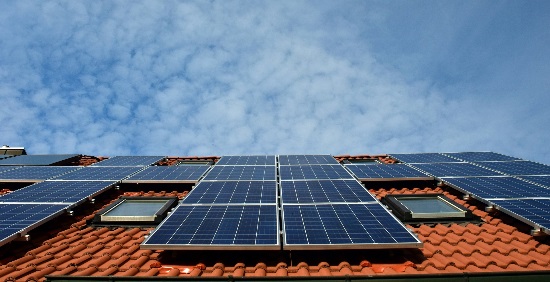Solar Panels and Your Home

With increasing electricity prices, now is a great time to join over 1,560 Woollahra properties that have a rooftop solar system.
Rooftop solar photovoltaics (PV) systems convert the sun’s energy into electricity to power your home and sell any excess electricity back into the central grid.
These systems generally pay themselves back in as little as three to seven years and reduce average household energy bill by hundreds of dollars each year.
Where do I start?
1. Check your roof with the free SunSPot tool
Discover if your roof is right for solar panels with a free, not-for-profit online tool that helps you check the solar potential of your roof.
We have partnered with SunSPoT, from the Australian Photovoltaic Institute, to provide an easy-to-use service to residents and businesses in our area. Built by engineers at University of NSW, SunSPoT will help you calculate the potential system size, output for solar on your roof.
Watch the video or enter your address into the SunSPoT website and find out how you could use solar on your roof.

Find out more and check your roof.
2. Find reliable information
View a recent webinar recording: learn how to install solar and batteries on your home or business rooftop. This video is 1 hour 30 minutes, available until June 2025.
Find online resources:
See the federal government's Solar Consumer Guide for households and businesses that walks you through the steps to installing solar. This guide covers the following topics:
- What size system you need and costs
- Financial benefits and government rebates available
- Getting to know the basics of solar technology
- Exploring rooftop solar design options
- Choosing a reputable solar retailer and installer
- Preparing for installation day
- Getting the most from your system.
The Clean Energy Council Solar Guide and Solar Quotes also have great resources to help get you started.
3. Consider adding a battery to your system
Installing a battery can help you:
- store and use more solar energy to reduce your electricity costs
- keep power on during outages
- reduce your environmental footprint by using more renewable energy.
The NSW Government is offering new incentives to help home and business owners add batteries to their solar systems. If you already have rooftop solar you can work with an accredited supplier to access $770 - $2,400 off the up-front installation costs of a battery. For new installations, incentives can be priced into your quote.
Do I need Council approval to install Solar PV?
We recommend the first port of call is for you to call our Duty Planner on 9391 7000. Our Duty Planner is here to help and will provide advice about the appropriate process to follow for your property.
Installing a solar PV system may not need Council approval if the proposal meets the relevant standards in State Environmental Planning Policy (Transport and Infrastructure) 2021. These requirements relate to details such as the size of the system, installation standards, the direction the panels face and the distance the panels protrude from the roofline. The full standard is available here: State Environmental Planning Policy (Transport and Infrastructure) 2021. Also refer to Part 2.3, Division 4, Electricity generating works for solar energy systems.
A Development Application (DA) is required for a solar energy system when the system does not meet these standards. If you need to submit a DA, Council will waive all fees for DAs that are solely for solar PV systems. Learn more about our DA process and access the relevant forms. The DA plans can be simple and should include a plan of the property, and the location and size of the proposed solar panel system. The relevant objectives and controls are contained in E6.3 of the Woollahra DCP 2015.
Can I install solar if I live in a Heritage Conservation Area?
Residents are sometimes unsure if they can install solar when they live in a heritage area. It is often possible, but you may require approval. You'll find information about installing rooftops solar in Heritage Conservation areas here.
What if I can’t have a rooftop solar PV system?
Switch to GreenPower
If your roof is unsuitable for a rooftop solar system, or you are a renter, you can power your home with renewable energy by purchasing GreenPower through your electricity retailer.
GreenPower is the only voluntary government accredited program that enables your electricity provider to purchase renewable energy on your behalf. An ACT, NSW, VIC and TAS State Governments joint initiative, GreenPower guarantees that the renewable energy you are buying is helping to develop new renewable energy projects.
More information
Find more tips to save on power bills at this NSW Government website. You'll find information on how to upgrade lighting, hot water, pool pumps, air-conditioning and related rebates.